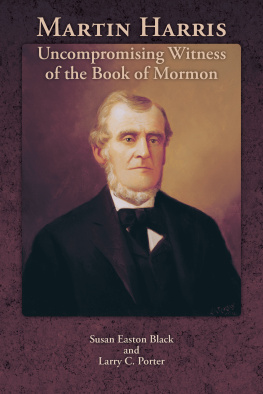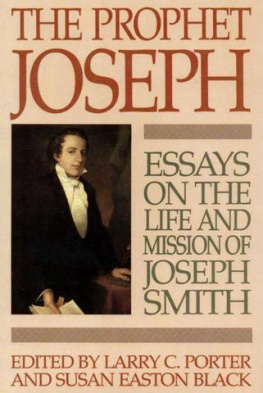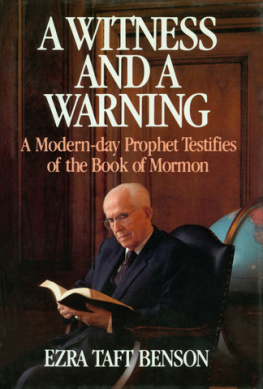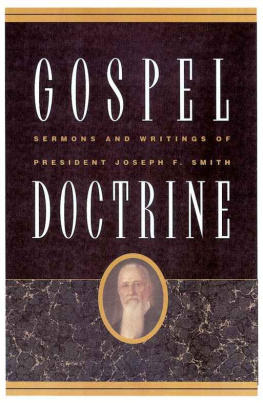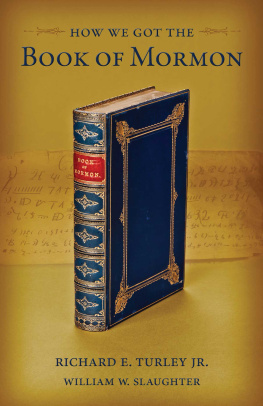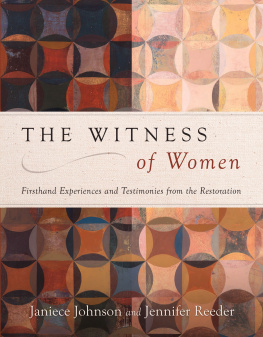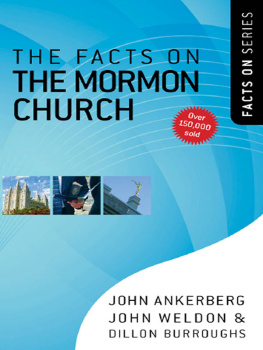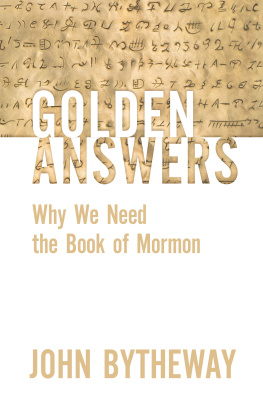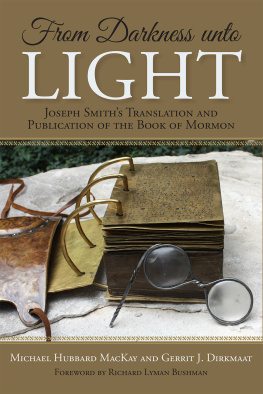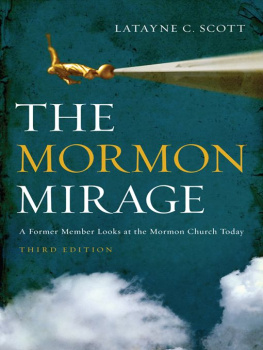Contents
Foreword
Virtually every Latter-day Saint is acquainted with the name Martin Harris. Many, if not most, could identify him as the one who lost the first 116 pages of the Book of Mormon manuscript in 1828, as one of the three witnesses who were shown the gold plates by the angel in 1829, or as the prosperous farmer who sold his property to finance the printing of the Book of Mormon in 1830. A few might even recognize him as one of the men who selected the initial quorum of twelve Apostles in 1835 or as a member of the first high council in the Church. Many are aware that he was excommunicated from the Church in 1837 but that he rejoined the Saints in 1870 in Utah, where he died in 1875. But between that winter of 183738 (when Joseph Smith went to Missouri and Martin remained in Kirtland) and Martins August return in 1870 sits a thirty-three-year blank spot in the life of this extraordinary witness in the knowledge of almost all general historians and readers.
Through all of the years, only one other biography of Martin Harris has been written, namely a well-respected family biography entitled The Martin Harris Story: Special Witness to the Book of Mormon by Madge Harris Tuckett and Belle Harris Wilson, published in Provo by Maasai in 1983. The story of Martin Harris is 110 pages in that book, with the stories of Emer Harris and Dennison Lott Harris being given 78 pages. Mostly in the 1980s, helpful investigations, various encyclopedia articles, two masters theses, and a pageant script were written about this man who knew, but now a generation later, with many more historical documents and insights available, the time is right for this needed landmark biography.
This fine biography by Susan Easton Black, with substantial co-authorship from Larry Porter, fills the gap in Martins history. But it does much more than that. This account begins with Martins ancestors, their arrival in New England, and their move to upstate New York, where Martin, following his fathers example, became a well-respected citizen and industrious farmer. The narrative also providesoften for the first timeextensive and fascinating details about Martins personal association with Joseph Smith, his early involvement in the translating and then the publishing of the Book of Mormon, and his financial and testimonial support of the fledgling church Joseph founded. Without doubt, Martin was one of the key figures in early Mormonism. He followed Joseph to Kirtland, where he participated influentially in church leadership until he had a falling out with Joseph over the financial troubles of the Kirtland Safety Society and other issues.
So when Joseph moved on to Missouri and then to Illinois, where he and his brother Hyrum were murdered, Martin stayed behind in Kirtland. And there he stayed, even when his second wife, Caroline, took their children and joined the Saints on their trek across the plains. Martin associated with various offshoots of Mormonism and served as unofficial caretaker of the abandoned Kirtland Temple. As he began growing old in Ohio, he drifted into poverty. It was there that missionaries from the LDS Church, on their way to eastern or European missions or returning to Utah from those missions, found Martin. Through their efforts and those of his son and namesake, Martin Harris Jr., he returned to the Church he had helped establish. This biography details every part of his life, down to his reunion with his family, his last testimonial days, and his death in Clarkston, Utah.
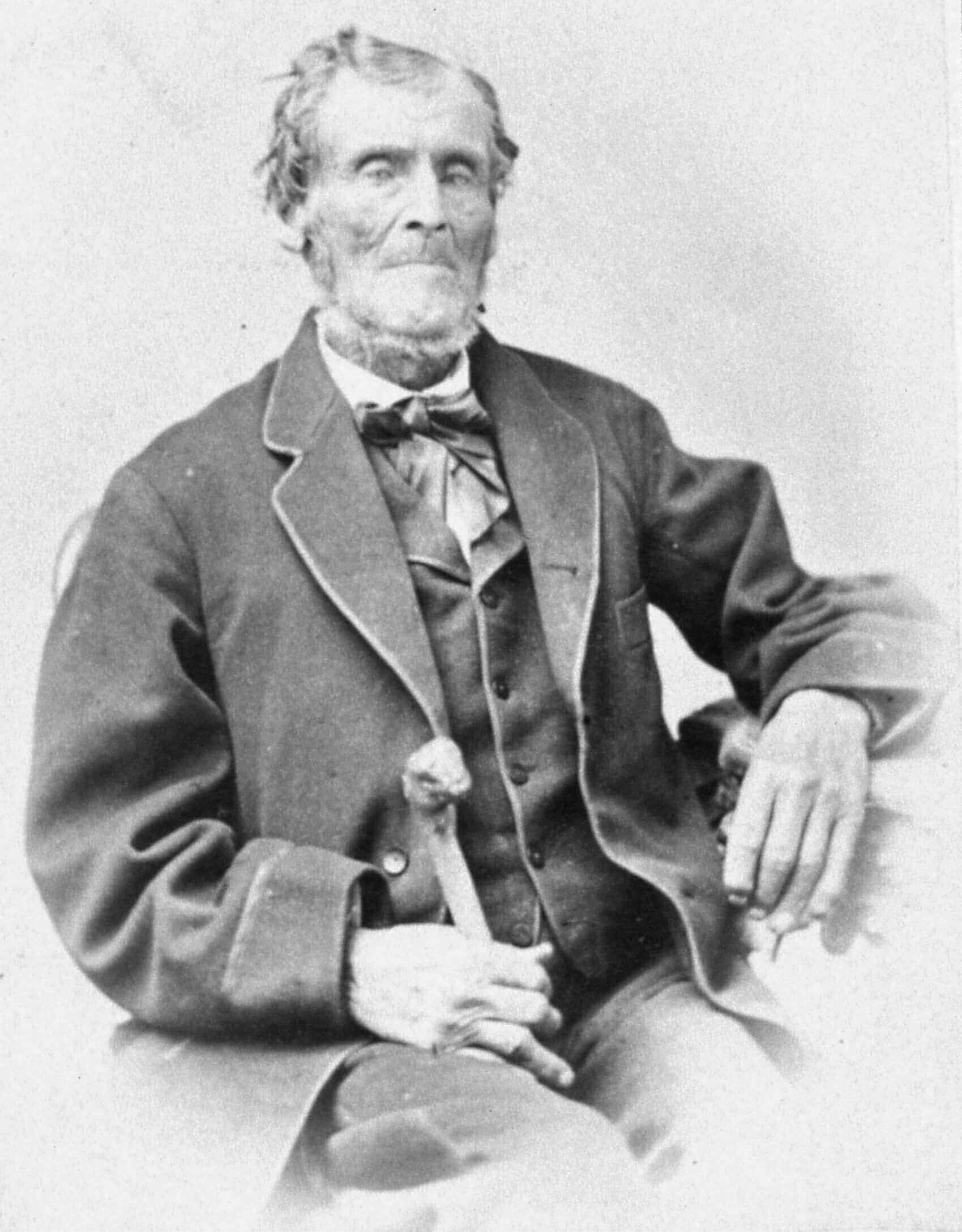
Martin Harris. Photograph by Savage and Ottinger. Courtesy Church History Library.
Martin Harriss story is both remarkable and tragic. Although this biography is not a psychological evaluation of Harriss persona, by honestly noting the strong qualities and troublesome weaknesses in Martins character it leads to insights about how his personality contributed to the decisions he made and the experiences he had.
As is detailed in this biography, Martin could be strong-willed, determined, and even stubborn. He was honest in his dealings and generous with his means, but his generosity had limits. When Joseph called for the Saints to support the Kirtland Safety Society, Martin refused to invest in this ill-timed banking partnership. He was an outspoken defender of the faith, but he could also be boastful and overbearing. He was a believing, dutiful follower of Joseph, but it is apparent that he also felt slighted when he was not given a more prominent role in Church leadership. Even though Martin had a falling out with Joseph, his devotion to the Book of Mormon kept him in the orbit of the larger Mormon movement. While his weaknesses have led some people to deprecate Martin in some respects, his strengths are exactly the kinds of virtues the Prophet Joseph saw in him that qualified him as an unbudging, reliable, and unequivocal witness of the Book of Mormon.
This book is an honest attempt to fully portray Martins character and to tell his whole lifes story. In many ways, it is easy to see Martin positively, but at the same time there are unfavorable aspects of Martins character that are not to be concealed. In some ways, he even comes across as a tragic or lamentably pathetic figure. With relentless rigor coupled with uncompromising kindness, Professors Black and Porter give all readers an open opportunity to come to know and to feel grateful to this ground-breaking contributor and authentic testifier of several of the key events of the organization of The Church of Jesus Christ of Latter-day Saints.
The one constant and dominant theme of this biography is Martins unfailing affirmation of what he saw and heard, together with Oliver Cowdery and David Whitmer, on a day near the end of June 1829, in a stand of trees not far from the Peter Whitmer home in Fayette, New York. During his years of absence from the main body of Saints, he never wavered in his testimony of the angel and the plates. In the end, the draw of his family and his faith brought him to Utah, where he found a measure of fame and contentment in his final days. While Martin Harris did not leave a personal account of his life or experiences, many people who knew him well or interviewed him intently retold what he said to them. Twenty-five such recollections are conveniently included in the documents compiled in Opening the Heavens, also published by BYU Studies. Additional second-hand accounts are included in this biography. The primary expression those interviewers and close observers recalled was Martins firm and unwavering testimony of seeing the angel and the plates. Especially in his later years in Utah, this was rightly his claim to fame, and he welcomed every opportunity until his dying day to bear witness of what he had experienced more than forty years earlier. Now this book masterfully brings all of this back to life more than one hundred forty years later.
John W. Welch
July 2018
Acknowledgments
The veracity of the founding events of the restoration of the gospel of Jesus Christ is dependent on reports of eyewitnesses. Written testimonies of Book of Mormon witnesses Oliver Cowdery, David Whitmer, and Martin Harris have played a central role in confirming the truthfulness of the restoration and the Book of Mormon. Numerous books and articles have been written of their testimonies, with the writings of Richard Lloyd Anderson being foremost.
Hoping to add a thought or two of our own, we join our scholarly friends and colleagues in presenting an in-depth biography on the life of Martin Harris. For years, we have taken special interest in Martinthe first confidant outside the Joseph Smith Sr. family to learn of the restoration events, the financier of the Book of Mormon publication, and the only witness of the Book of Mormon to gather with Latter-day Saints in the Salt Lake Valley. We are not alone in taking a peculiar interest in Martin Harris. His name and some of his life experiences, the most repeated being the loss of the 116-page manuscript of the book of Lehi, are well-known to the worldwide membership of The Church of Jesus Christ of Latter-day Saints. As authors, we believe the life and character of Martin Harris deserve a broader stroke than one or two vignettes convey. After all, no other person in the cradle of the Restoration contributed more financial support than Martin. Yet few have had their weaknesses and foibles published in scriptural text for the world to read (D&C 3:12).
Next page
